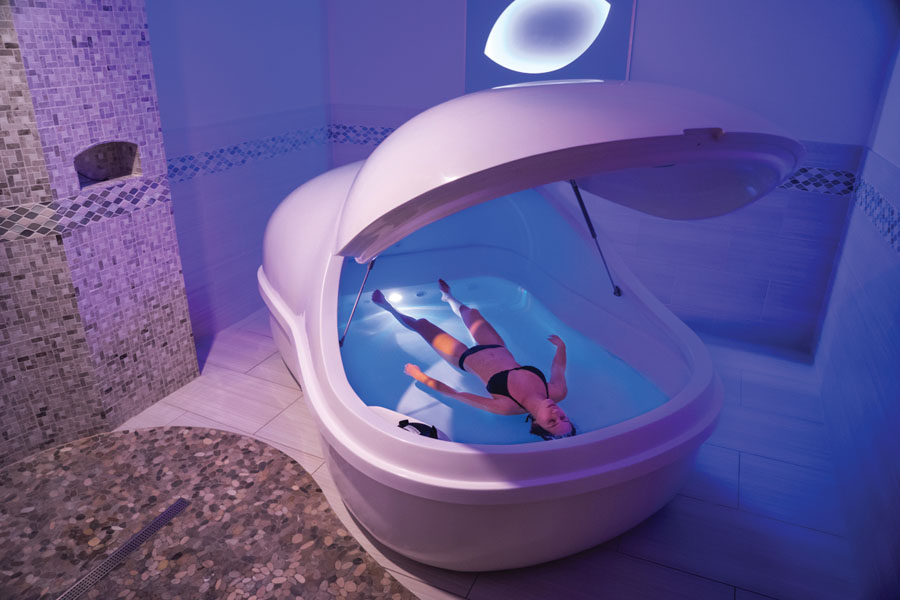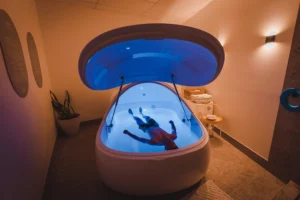
In today’s fast-paced world, people are turning to holistic wellness methods to relieve stress, anxiety, and physical strain. One increasingly popular method is float therapy—a practice where individuals float effortlessly in a specially designed tank filled with Epsom salt and water. Known also as float session therapy, this approach is rooted in decades of scientific research and is offered by many wellness centers under the umbrella of float therapy services.
But what’s the actual science behind this experience? Is it just a trend, or is there solid research supporting the float session benefits? In this comprehensive blog, we’ll dive deep into how float therapy works, what scientific studies have revealed, and how this serene experience affects the mind and body.
The Basics of Float Therapy
Float therapy sessions take place in what is commonly referred to as a sensory deprivation tank or float tank. These tanks are filled with about 10 inches of water saturated with Epsom salts (magnesium sulfate), making it possible for the body to float effortlessly. The water is heated to skin temperature, and the tank is soundproof and dark, eliminating external stimuli.
This environment promotes deep relaxation and allows the brain and body to shift into a restorative state. When included as part of regular float therapy services, the effects can be both immediate and long-term.
The Scientific Mechanism: How Does It Work?
1. Magnesium Absorption
One of the key ingredients in float tanks is Epsom salt, which contains magnesium sulfate. Magnesium is a crucial mineral for muscle function, nerve transmission, and stress regulation. During float therapy sessions, magnesium may be absorbed through the skin, helping reduce inflammation, soothe sore muscles, and improve circulation.
2. Sensory Reduction and the Brain
The tank’s main appeal is its ability to eliminate external distractions—no light, no sound, no pressure. This triggers what scientists call the “relaxation response,” reducing activity in the sympathetic nervous system (responsible for the fight-or-flight response) and increasing parasympathetic activity (rest-and-digest mode).
Studies from the Laurentian University in Canada and the Swedish Karolinska Institute have shown that this deep sensory reduction causes the brain to shift into theta brainwave activity—a state similar to that experienced in deep meditation and just before sleep.
3. Cortisol and Stress Reduction
High cortisol levels are directly linked to stress, anxiety, and even weight gain. Multiple studies have shown that float session therapy can significantly lower cortisol levels after even a single session. In fact, many clinics offering float therapy services report immediate stress relief and calmness in clients following just one float.
Scientific Studies and Evidence
Several peer-reviewed studies support the benefits of float therapy sessions, including:
- A 2018 study in the journal PLoS One found that participants experienced significant reductions in anxiety and improvements in mood after just one float.
- A 2016 study from Sweden showed that after 12 float sessions, participants with generalized anxiety disorder showed lasting improvement in symptoms.
- Research published in BMC Complementary Medicine and Therapies confirmed that float therapy can enhance sleep quality, reduce pain, and improve overall well-being.
These findings provide scientific backing for float session benefits such as reduced anxiety, enhanced focus, and better physical recovery.
Neurological and Psychological Effects
Float session therapy impacts more than just the physical body. Here’s how the experience influences brain chemistry and psychology:
- Dopamine & Endorphin Release: Floating can boost levels of feel-good chemicals, which can relieve symptoms of depression and elevate mood.
- Improved Focus & Creativity: The meditative state achieved during float therapy sessions allows the mind to reset, which often results in bursts of creative thinking and problem-solving ability.
- Reduced PTSD and Trauma Symptoms: Some studies have shown that float therapy services may benefit individuals with PTSD by offering a safe space to disconnect from environmental triggers.
Float Therapy vs. Meditation and Yoga
While yoga and meditation require focus and practice, float session therapy provides similar mental and emotional benefits passively. Users don’t need any skill or discipline to benefit from a float—simply lying back in the water begins the process. This makes it an accessible form of relaxation and recovery for people of all ages and fitness levels.
Who Can Benefit Most?
While virtually anyone can benefit from float therapy services, specific groups may see greater results:
- Athletes: Use float session therapy to reduce muscle soreness and enhance recovery.
- Professionals & Entrepreneurs: Floating reduces mental fatigue and boosts creativity.
- Chronic Pain Sufferers: Regular float therapy sessions can help manage conditions like fibromyalgia and arthritis.
- People with Anxiety or PTSD: The calming, non-stimulating environment supports emotional healing.
What Happens During a Float Session?
When you book float therapy services, here’s what to expect:
- Pre-float Preparation: Shower to remove oils and perfumes.
- The Float: Enter the tank, close the lid (optional), and lie back. The high salt content will keep you effortlessly buoyant.
- Relax: Let go. Your session may include ambient music or total silence.
- Post-float Shower: Rinse off the salt, hydrate, and enjoy the mental clarity that follows.
Most float therapy sessions last between 60 to 90 minutes, depending on personal preference and treatment goals.
Float Session Benefits – A Quick Summary
Here’s a consolidated list of proven float session benefits backed by science:
- Reduces stress and anxiety
- Enhances muscle recovery
- Improves sleep quality
- Boosts creativity and focus
- Lowers blood pressure
- Supports emotional resilience
- Promotes magnesium absorption
- Helps manage chronic pain
FAQs About the Science Behind Float Therapy
Q1: Is there real science behind float therapy?
Yes. Numerous studies from reputable institutions show that float therapy sessions reduce stress, anxiety, and pain while improving mood and recovery.
Q2: Can the magnesium in Epsom salt be absorbed through the skin?
Some research suggests that transdermal absorption of magnesium occurs, although it may vary by individual. Even without absorption, Epsom salt provides buoyancy and muscle relief.
Q3: How does floating impact the brain?
Float session therapy triggers theta wave activity in the brain, commonly associated with deep meditation, allowing for mental clarity and relaxation.
Q4: Can float therapy replace medications or other treatments?
No. While float therapy services are a great complementary therapy, they should not replace prescribed treatments without consulting a healthcare provider.
Q5: Are there any risks to floating?
Float therapy is generally safe for most people. However, individuals with certain conditions (e.g., low blood pressure, epilepsy, or severe skin wounds) should consult a doctor before booking float therapy sessions.
Q6: How often should I float to see results?
While even one session offers benefits, consistent practice—once a week or biweekly—yields the most profound float session benefits.
Conclusion
The science behind float therapy is clear: reducing sensory input has measurable and meaningful effects on our mental and physical health. Whether you’re an athlete seeking recovery, a professional looking for focus, or someone simply craving calm, float therapy services offer a powerful and scientifically backed route to well-being.
With proven benefits and growing popularity, float therapy sessions are no longer just a wellness trend—they are a legitimate, research-supported practice for enhancing quality of life. Start exploring float session therapy today and experience the remarkable float session benefits yourself.




